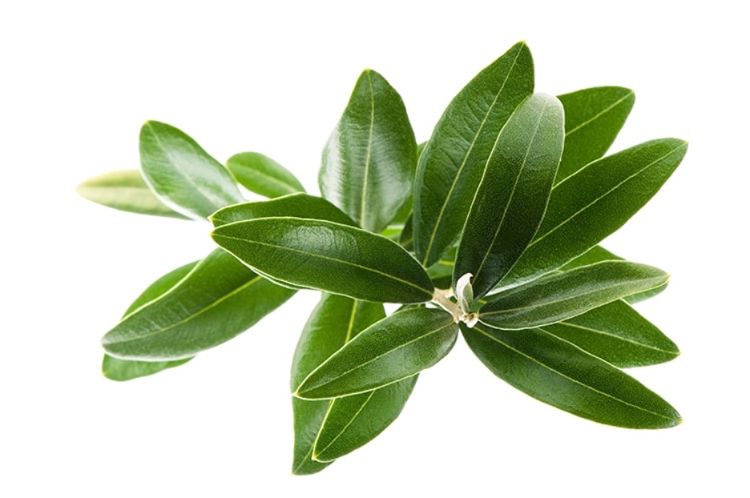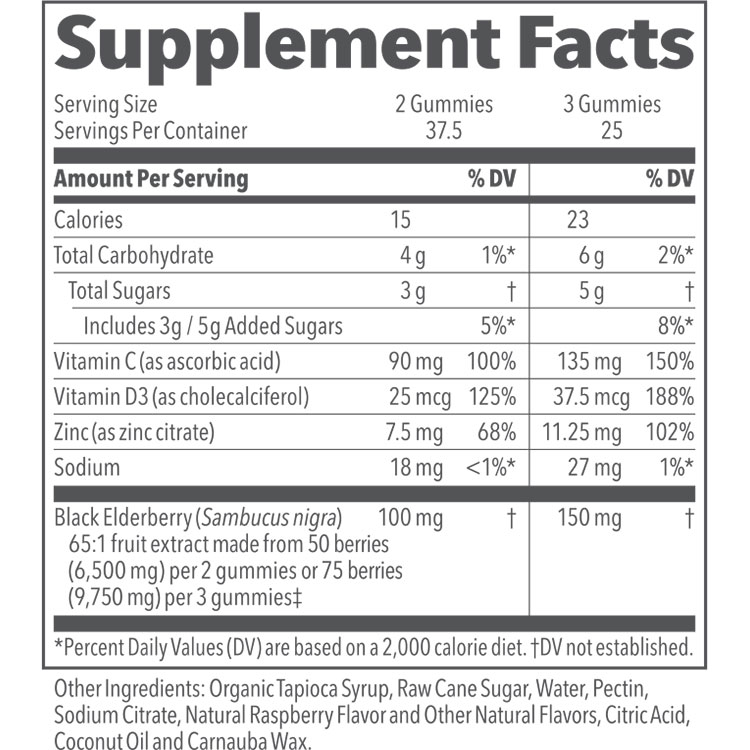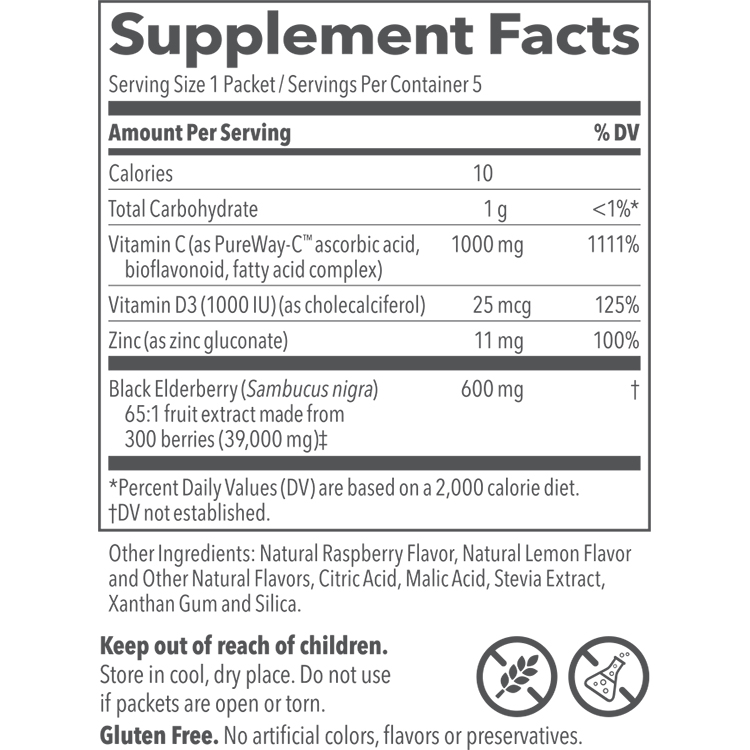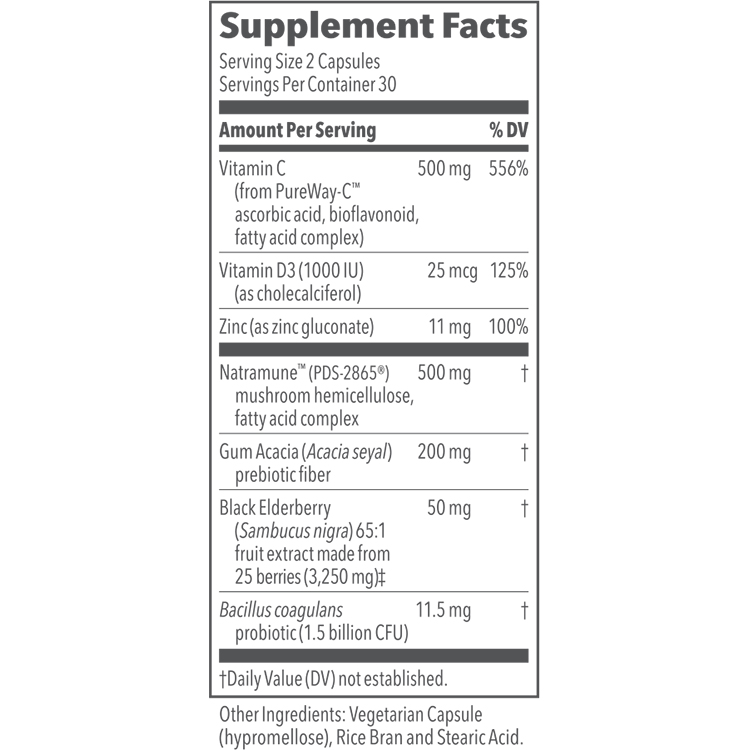BACKGROUND
Ingredient Type: Botanical, Extract
Also Known As: Olea europaea, Oleuropein (1), Common olive, African olive, True olive, Wild olive

The olive tree, from the Oleaceae family, is native to the Mediterranean basin and parts of Asia. Olives have been collected in the Mediterranean basin since the sixth millennium BC. Olive trees were cultivated, and the olive oil production was established in the region in the third millennium BC. The olive has a long historical significance and symbolism. It is one of the symbols for peace and health, and an example of this regard are the olive tree branches on the official seal and emblem of the World Health Organization. The beneficial effects of olive tree leaves come from polyphenols found in the leaves themselves as well as the olive tree fruits and the unrefined olive oil (virgin olive oil). The molecule responsible for unprocessed olives known as oleuropein is the predominant phenolic constituent found in olive leaves (as well as seed, pulp, peel of unripe olives). The polyphenols of the olive are known for their anti-inflammatory and anti-tumor properties and are also regarded as antioxidant and radical scavengers. A number of other beneficial effects have been attributed to oleuropein including, antimicrobial, antiviral, neuroprotective, hepatoprotective, anti-cancer, anti-angiogenic, anti-atherogenic effects (2,3,4,5,6,7,8,9,10).
TRADITIONAL USE
Olive oil was used in Ancient Greece for body health. Meanwhile, Ancient Egypt used the olive
leaves in the mummification process. Later in history, Mediterranean and European countries
used the olive leaves to treat fever and malaria among other diseases. Over time, olive oil
specifically, has been established as a pharmacological agent and implemented in cosmetics
(2,3,4,5,6,7,8,9,10).
WHAT DOES SCIENCE TELL US?
Olive Leaf Might Reduce Blood Pressure:
The literature on olive leaf’s effect on blood pressure is generally consistent with relatively robust evidence supporting a reduction in blood pressure. Four of the five studies retrieved on the effect of olive leaf on blood pressure indicated its efficacy to reduce blood pressure when administered at 400 ng four times daily for three months in subjects with essential arterial hypertension; at 161.0 mg/kg in subjects with stable coronary heart disease (CHD) for a duration of three weeks; at 1000 mg/day in borderline hypertensive monozygotic twins for eight weeks; at 500 mg twice daily in in patients with stage-1 hypertension for eight weeks; but no effects were noted when 51.1 mg was administered in middle-aged overweight men for twelve weeks. In one of the studies, the effectiveness of olive leaf was compared to Captopril and found the results to be comparable.
The effect of titrated Olea extract was investigated in the treatment of essential arterial hypertension in thirty subjects. The Olea europeae L. leaf aqueous extract (400 ng x 4/24 h) was administered for a duration of three months after fifteen days of treatment. Post-assessment results revealed a significant decrease in blood pressure (p < 0.001), a decrease of glycemia (p < 0.01), and a decrease of calcemia (p < 0.01). The clinical trial concluded the effectiveness of titrated Olea extract in decreasing blood pressure (11).
The effect of food supplementation with an olive leaf extract was investigated in forty borderline hypertensive monozygotic twins. The twins of each pair were given either 500 or 1000 mg/day EFLA943 of olive leaf extract or advised on favorable lifestyle. Post-assessment revealed a significant change in blood pressure within pairs (dose-dependent), with mean systolic differences of < or =6 mmHg (500 mg vs control), < or =13 mmHg (1000 vs 500 mg), and diastolic differences of < or =5 mmHg. In addition, after eight weeks in the high dose group, the following was observed a significant decrease in blood pressure (137 +/- 10/80 +/- 10 vs 126 +/- 9/76 +/- 6), while no change in the low dose group. Also, researchers saw a significant decrease in cholesterol levels decreased for all treatments (with significant dose-dependent within-pair differences for LDL-cholesterol). The study concluded the effectiveness of the antihypertensive and cholesterol-lowering action of EFLA943 of olive leaf extract in humans (12).
The effectiveness of olive leaf extract (Olea europaea) in comparison with Captopril (a high blood pressure medication) was investigated in a double-blind, randomized, parallel and active-controlled clinical study in patients with stage-1 hypertension. The anti-hypertensive effect, the hypolipidemic effects, and the tolerability of olive leaf extract were evaluated. Participants were given either 500 mg of olive (Olea europaea L.) leaf extract (EFLA(®)943) twice daily in a flat-dose manner for a duration of eight weeks (with a run-in period of four weeks) or 12.5 mg of Captopril twice daily and after two weeks the dose was titrated to 25 mg twice daily (based on subject’s response to treatment). Post-assessment revealed a significant reduction of systolic blood pressure (SBP) and diastolic blood pressure (DBP) from baseline in both groups (not significantly different between the groups) and a significant reduction of triglycerides in the olive group (but not in the Captopril group). The study concluded the equal effectiveness of 500 mg of olive leaf extract twice daily as that of Captopril at 12.5-25 mg twice daily to lower systolic and diastolic blood pressures in subjects with stage-1 hypertension (13).
Olive Leaf Possibly Supports Balanced Blood Sugar:
Positive but insufficient evidence supports the positive effect of olive leaf on insulin. In the two studies retrieved, 51.1 mg was administered to middle-aged overweight men for a duration of twelve weeks and 500 mg/day was administered to type 2 diabetes patients, both resulting in a decrease of fasted and postprandial insulin.
The efficacy of olive leaf extract was investigated in improving glucose homeostasis in seventy-nine adults with type 2 diabetes in a controlled clinical trial. The participants were given either 500 mg/day olive leaf extract tablet or placebo for a duration of fourteen weeks. The researchers measured glucose homeostasis including Hba1c and plasma insulin levels. Post-assessment results revealed in the olive leaf extract group, a significant reduction in HbA1c and fasting plasma insulin levels and no significant difference in postprandial plasma insulin levels when compared with the placebo. The study concluded the effectiveness of the olive leaf extract in improving glucose homeostasis in humans as well as its adjunct therapy in normalizing glucose homeostasis in human diabetic subjects (14).
The effectiveness of olive leaf polyphenols in improving insulin sensitivity was investigated in a randomized, double-blinded, placebo-controlled, crossover trial in middle-aged forty-six overweight men. The participants (aged 46.4 ± 5.5 years, BMI 28.0 ± 2.0 kg/m(2)) were either given 51.1 mg oleuropein (olive leaf extract) or placebo (9.7 mg/day hydroxytyrosol) for the duration of twelve weeks. The crossover occurred after a six-week washout. Post-assessment results revealed in the olive leaf group:
- A 15% improvement in insulin sensitivity (p = 0.024)
- A 28% improvement in pancreatic β-cell responsiveness (p = 0.013)
- An increase in fasting interleukin-6 concentration (p = 0.014)
- An increase in IGFBP-1 concentration (p = 0.024)
- An increase in IGFBP-2 concentration (p = 0.015)
The study concluded the effectiveness of the olive leaf polyphenols to significantly improve insulin sensitivity and pancreatic β-cell secretory capacity in overweight middle-aged men at risk of developing the metabolic syndrome when administered for twelve weeks (15).
Olive Leaf Possibly Supports Balanced Cholesterol:
The effectiveness of olive leaf extract (Olea europaea) in comparison with Captopril (a high blood pressure medication) was investigated in a double-blind, randomized, parallel and active-controlled clinical study in patients with stage-1 hypertension. Participants were given either 500 mg of olive (Olea europaea L.) leaf extract (EFLA® 943) twice daily in a flat-dose manner for a duration of eight weeks (with a run-in period of four weeks), or 12.5 mg of Captopril twice daily and when necessary after two weeks the dose was titrated to 25 mg twice daily (based on subject’s response to treatment). Post-assessment revealed a significant reduction of triglycerides in the olive group (but not in the Captopril group) (13).
The influence of Olea europea on bone turnover has been investigated in a double-blind placebo-controlled study in sixty-four postmenopausal women with osteopenia. Participants were divided into two groups and given either 250 mg/day of olive extract and 1000 mg/day Ca (treatment) or 1000 mg/day Ca alone (placebo) for the duration of twelve months. Post-assessment revealed in the treatment group (in comparison with placebo) a significant improvement in the lipid profiles and a significant decrease in total and LDL-cholesterol. The exploratory study concluded the effectiveness of olive polyphenol extract (Bonolive®) in improving blood lipid profiles (16).
Olive Leaf Possibly Supports Healthy Bones:
A single study was retrieved on the effect of olive leaf extract on osteocalcin in subjects with osteopenia; this renders the existing evidence insufficient for drawing definite conclusions. Regardless, the existing evidence suggests that supplementation of 250 mg daily for 12 months may be effective in increasing serum osteocalcin levels.
The influence of Olea europea on bone turnover has been investigated in a double-blind placebo-controlled study in sixty-four postmenopausal women with osteopenia. Participants (with a mean bone mineral density (BMD) T-score between -1.5 and -2.5 in the lumbar spine (L2-L4)) were divided into two groups and given either 250 mg/day of olive extract and 1000 mg/day Ca (treatment) or 1000 mg/day Ca alone (placebo) for the duration of twelve months. Post-assessment revealed in the treatment group (in comparison with placebo) a significant increase in the levels of the pro-osteoblastic marker osteocalcin, stable BMD (while it decreased in the placebo group). The exploratory study concluded the effectiveness of olive polyphenol extract (Bonolive®) on serum osteocalcin levels and its potential in stabilizing the lumbar spine BMD (16).
Olive Leaf Possibly Reduces Pain:
Only one study has been identified on the effect of olive leaf on pain; as such, the evidence is inadequate. The evidence that does exist suggests that olive leaf extract is effective in improving the overall pain measurements in patients with osteoarthritis of the knee. However, other individual measurements of pain did not show improvement.
A double-blind clinical trial investigated the effect of hydroxytyrosol, a phenylethanoid of Olea europaea, on patients with osteoarthritis of the knee. The patients were divided into two groups and given either 50.1 mg/day of hydroxytyrosol or placebo for 4 weeks. Post-assessment results revealed a significant improvement (by 14%) in the pain measurement index (Japanese Orthopedic Association score) in comparison with placebo (4%); as well as improvement in the visual analog scale score (compared to placebo). This preliminary research indicated the potential effectiveness of hydroxytyrosol of Olea europaea in improving the overall pain in patients with osteoarthritis of the knee (17).
SAFETY
Olive leaf extract is most likely safe when used in the studied dosages and duration (15,16).
Interactions:
- No interactions have been noted.
Side-Effects:
- Side effects have not been noted.
REFERENCES
- Barbaro B, Toietta G, Maggio R, et al. Effects of the Olive-Derived Polyphenol Oleuropein on Human Health. International Journal of Molecular Sciences. 2014; 15(10):18508-18524. doi:10.3390/ijms151018508
- Oleuropein. PubChem. https://pubchem.ncbi.nlm.nih.gov/compound/5281544#section=Top Accessed 28 Apr. 2018.
- Ghanbari R, Anwar F, Alkharfy KM, Gilani AH, Saari N. Valuable nutrients and functional bioactives in different parts of olive (Olea europaea L.)-A review. Int. J. Mol. Sci. 2012;13:3291–3340. doi: 10.3390/ijms13033291
- Visioli F, Galli C. Biological properties of olive oil phytochemicals. Crit. Rev. Food Sci. Nutr. 2002;42:209–221. doi: 10.1080/10408690290825529.
- Cicerale S, Conlan XA, Sinclair AJ, Keast RS. Chemistry and health of olive oil phenolics. Crit. Rev. Food Sci. Nutr. 2009;49:218–236. doi: 10.1080/10408390701856223.
- Cicerale S, Lucas L, Keast R. Biological activities of phenolic compounds present in virgin olive oil. Int. J. Mol. Sci. 2010;11:458–479. DOI: 10.3390/ijms11020458
- Gooch E. Ten plus one things you may not know about olive. Epikouria Magazine. Fall-Spring. 2005.
- Gucci R, Lombardini L, Tattini M. Analysis of leaf water relations in leaves of two olive (Olea europaea) cultivars differing in tolerance to salinity. Tree Physiol. 1997;17:13–21.
- Fernandez-Escobar R, Moreno R, Garcia-Creus M. Seasonal changes of mineral nutrients in olive leaves during the alternate-bearing cycle. Sci. Hort. 1999;82:25–45.
- Ciafardini G, Zullo BA. Microbiological activity in stored olive oil. Int. J. Food Microbiol. 2002;75:111–118.
- Cherif S, Rahal N, Haouala M, et al. [A clinical trial of a titrated Olea extract in the treatment of essential arterial hypertension]. J Pharm Belg 1996;51:69-71.
- Perrinjaquet-Moccetti T, Busjahn A, Schmidlin C, Schmidt A, Bradl B, Aydogan C. Food supplementation with an olive (Olea europaeaL.) leaf extract reduces blood pressure in borderline hypertensive monozygotic twins. Phytotherapy Research. 2008;22(9):1239-1242. doi:10.1002/ptr.2455.
- Susalit E, Agus N, Effendi I et al. Olive (Olea europaea) leaf extract effective in patients with stage-1 hypertension: Comparison with Captopril. Phytomedicine. 2011;18(4):251-258. doi:10.1016/j.phymed.2010.08.016.
- Wainstein J, Ganz T, Boaz M et al. Olive Leaf Extract as a Hypoglycemic Agent in Both Human Diabetic Subjects and in Rats. J Med Food. 2012;15(7):605-610. doi:10.1089/jmf.2011.0243.
- de Bock M, Derraik J, Brennan C et al. Olive (Olea europaea L.) Leaf Polyphenols Improve Insulin Sensitivity in Middle-Aged Overweight Men: A Randomized, Placebo-Controlled, Crossover Trial. PLoS ONE. 2013;8(3):e57622. doi:10.1371/journal.pone.0057622.
- Filip R, Possemiers S, Heyerick A, Pinheiro I, Raszewski G, Davicco MJ, Coxam V. Twelve-month consumption of a polyphenol extract from olive (Olea europaea) in a double blind, randomized trial increases serum total osteocalcin levels and improves serum lipid profiles in postmenopausal women with osteopenia. J Nutr Health Aging. 2015 Jan;19(1):77-86. DOI: 10.1007/s12603-014-0480-x
- Takeda R, Koike T, Taniguchi I, Tanaka K. Double-blind placebo-controlled trial of hydroxytyrosol of Olea europaea on pain in gonarthrosis. Phytomedicine. 2013 Jul 15;20(10):861-4. DOI: 10.1016/j.phymed.2013.03.021
See the European Medicines Agency public summary for Oleae folium, the Examine.com entry for olive leaf extract, the Michigan Medicine Health Library entry for olive leaf, or the Drugs.com entry for olive leaf for more information.




